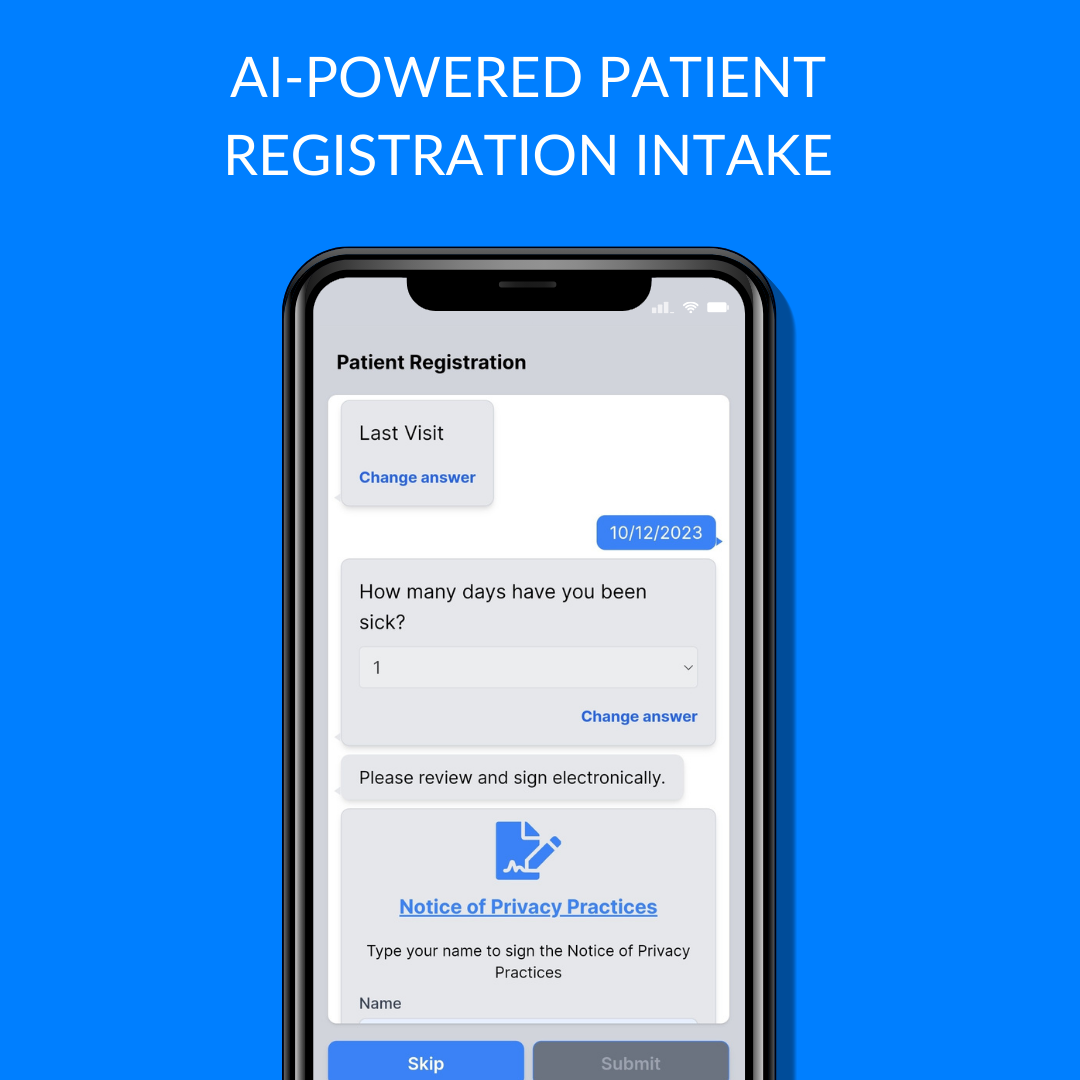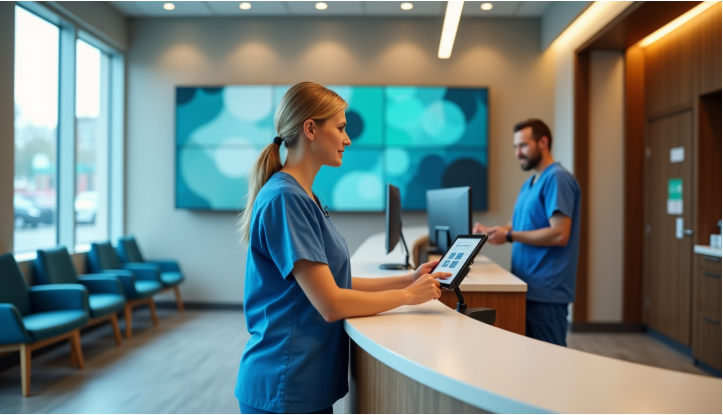In today’s fast-paced world, efficiency is key, especially in healthcare. One significant way healthcare practices can enhance efficiency and improve patient experience is by automating patient intake forms and implementing a digital front door. These technological advancements reduce friction, creating a smoother and more welcoming experience for patients and healthcare providers.

Automated Patient Intake Forms
Traditionally, patient intake involves a lot of paperwork. Patients had to fill out lengthy forms in the waiting room, often leading to delays, inaccuracies, and frustration. Automating this process offers several advantages:
- ⏰ Time Savings: Patients can complete forms online at their convenience before their appointment, reducing wait times at the clinic.
- ✔️ Accuracy: Digital forms minimize errors caused by illegible handwriting and missed questions, ensuring that healthcare providers receive accurate and complete information.
- Efficiency: Administrative staff spend less time on data entry, allowing them to focus on more critical tasks. This also speeds up the check-in process, leading to better patient flow.
- Patient Satisfaction: Patients who can complete forms independently feel more in control and less rushed, leading to higher satisfaction levels.
The Digital Front Door
A digital front door refers to using digital tools and platforms that streamline patient interactions with healthcare practices. This concept encompasses various technologies, including patient portals, online scheduling, telehealth, and digital communication. Here’s how a digital front door benefits both patients and practices:
- Convenience: Patients can book appointments, request prescription refills, and communicate with their healthcare providers online, eliminating the need for phone calls and reducing administrative burden.
- Accessibility: Telehealth options allow patients to consult with their doctors from the comfort of their homes, which is particularly beneficial for those with mobility issues or those living in remote areas.
- Engagement: Digital tools, such as patient portals, provide access to medical records, test results, and personalized health information, encouraging patients to take an active role in their healthcare.
- Cost Efficiency: By reducing no-show rates and streamlining administrative processes, healthcare practices can save on operational costs, ultimately making healthcare more affordable.

Reducing Friction and Enhancing Experience
Integrating automated patient intake forms and a digital front door creates a seamless and efficient patient experience. By reducing the friction points traditionally associated with healthcare visits, such as lengthy paperwork and complex scheduling processes, these technologies help to:
Enhance Patient Trust: A streamlined and modern approach to patient care fosters trust and confidence in healthcare practices.
Improve Workflow: Healthcare providers can focus more on patient care and less on administrative tasks, improving overall workflow and job satisfaction.
Boost Patient Retention: Satisfied patients are more likely to return and recommend the practice to others, leading to better patient retention and growth.
In conclusion, automating patient intake forms and adopting a digital front door are transformative steps for healthcare practices. These innovations reduce friction and pave the way for a more efficient, patient-centered approach to healthcare, ultimately benefiting both patients and providers.
By embracing these technologies, healthcare practices can ensure they are not only meeting the current needs of their patients but also setting the stage for a future where healthcare is more accessible, efficient, and patient-friendly.











